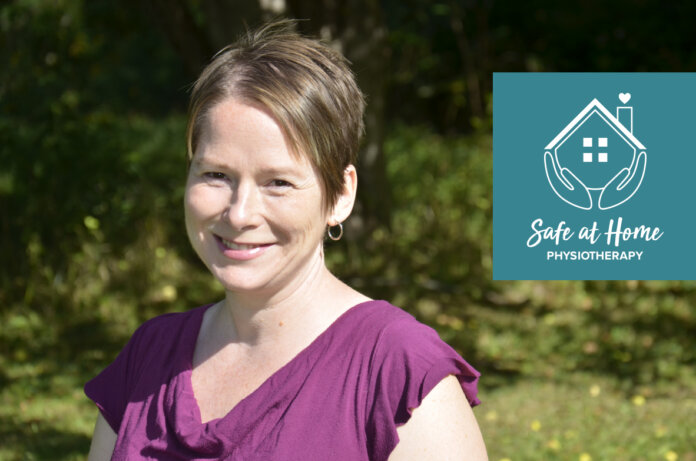by Joni Snair, PT, Founder/Owner & Physiotherapist, Safe at Home Physiotherapy
It’s National Accessibility Week and I want to challenge you to think outside the box. Accessibility means that your home, workplace, stores, parks, websites and more are set up so everyone can access them. Basically, everyone can access everything without asking for help.
The most common image of accessibility is a person that uses a wheelchair. That’s not a surprise because the international symbol of accessibility is a wheelchair user. But it also applies to people with sensory challenges such as vision or hearing or people with head injuries or autism. Think about people of different heights, ranging from children to tall adults, seniors or parents pushing strollers, people who have had a stroke or have trouble standing for a long time whether due to arthritis, cancer or a number of other reasons. And don’t forget people in pain. Pain is the most common disability after all.
So how do you improve accessibility? The building code is the minimum standard for buildings, residential homes and apartments. But it is not necessarily accessible to all.

Whether you have a restaurant or store front or want to help set up your home to prevent falls and promote independence, here are 6 tips to improve accessibility:
1- Grab bars are not just for the washroom! Most people see the benefit of grab bars in the bathroom. But adding a grab bar to the entranceway or the stairs can help improve confidence and independence at very low cost.
2- Signage- Large print and high contrast fonts that are easily read (think sans serif) is preferred. Does the signage to and from a point lead people easily and in a logical path? Are there both pictures and words for people to follow. Think about following the signs to baggage claim in an airport. The images make a huge difference when you make your way to baggage claim, even in an unfamiliar place. Consider adding braille and tactile to signs as well as a combination of wall and hanging signs. For more information on how to make your website more accessible, see https://www.w3.org/standards/webdesign/accessibility
3- Space- Is there enough space? Can you get by with a stroller or walker? What about two people that use sign language? Can they walk side by side so that they can sign and walk at the same time? I know some of the boxed stores put up plastic partitions to keep people safely distanced which is great. But I encourage you to make sure that there is still enough room to get through with a mobility device. And make sure the plastic partitions are high contrast or marked so people with low vision can see the partitions and don’t walk into them by mistake. For your home, keep hallways free of clutter and arrange your furniture so that you can get by easily.
4- Height of hand sanitizer- So many caring business owners put up hand sanitizers at the beginning of the pandemic to ensure safety for everyone but I often see the dispensers installed too high for everyone to easily reach. Can children or someone in a seated position reach the dispenser? If not, lower the dispensers so everyone can reach. Same goes for paper towel and soap in the washrooms.
5- Lighting- People with low vision need enough light so that they can see optimally, without shadows, especially when your customer forgot their reading glasses and wants to read your signage. Proper lighting is especially important for safety at night in parking lots but also when you get up to go to the bathroom (think nightlight!).
6- Add a chair- Having sufficient seating to take a break is crucial to many people, especially seniors. Take care to make sure that the seating doesn’t interfere with the natural pathways so someone using a cane due to low vision is not tripped up and have a variety of heights with and without wheelchairs. And don’t forget space for mobility devices and guide dogs.
There are many other suggestions. Some at higher costs such as ramp design, automatic doors and elevators. Did you know there is government funding available to support improving accessibility?
For more information on how you can make your home or business more accessible, contact Joni at 902-809-1793 or joni@safeathomephysio.ca
Joni Snair is a physiotherapist with 15 years experience. She is passionate about making our community more accessible and is currently completing the Rick Hansen Foundation Accessibility Course. She owns Safe at Home Physiotherapy where she provides physiotherapy services to people of all ages in their home and strictly follows all Public Health Guidelines.
If you or someone you know could benefit from a visit from Joni, please contact her at 902-809-1793. Follow us on Facebook at https://www.facebook.com/SafeatHomePhysio and subscribe to our email list at https://safeathomephysio.ca/contact-us






















